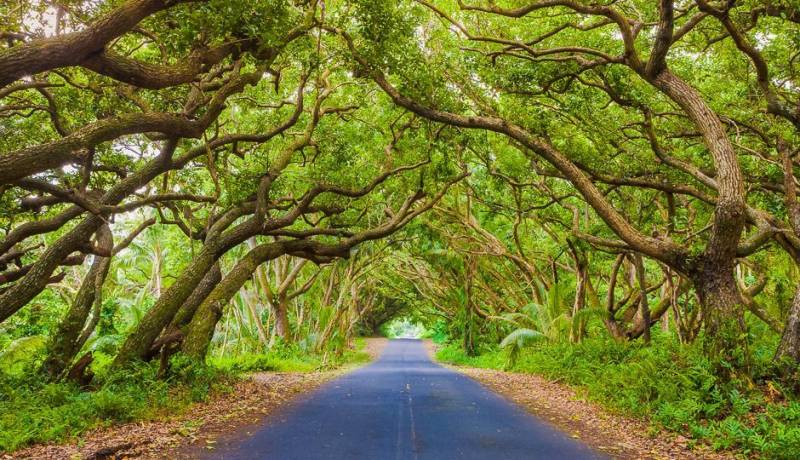Years ago my father planted a hibiscus in front of our home on Sherman Ave. After about 20 years of struggling in Florida sand, it finally grew about 5 feet high. Needless to say, he was completely awestruck when he saw how effortlessly things grow in Hawai`i’s rich, volcanic soil. The word “volunteer” takes on a whole new meaning in the context of our tropical agriculture. Fact is, it takes more effort to control growth than to start, and when local folks and tree trimmers refer to “money trees,” they’re definitely not referring to the same thing!

About Albezias
Anyone who ever took the drive along Highway 132 thru the “tree tunnel” knows the potential beauty of an Albizia. When it comes to potential money pits, however, beauty is definitely only skin deep when it comes to these behemoths. Cutting them is really not a matter of “if” but “when.” They not only grow like weeds, but the brittle branches tend to break with little encouragement.
My son-in-law, Chris Kraus of Tree Works, Inc., knows all about these “money trees.” He has seen the trunks reach over 10 feet, and it’s not unusual for removal to require a crane after being allowed to grow for years unrestrained behind and between homes. I’ve had listings where they reached high above the electric poles. According to Wikipedia, Albizias not only grow fast, but they also tend to colonize quickly, which explains the beautiful canopy along the roadway and in so much of our rainforest.
Making the Cut
Neighbors often want to know if they are allowed to cut limbs or roots that intrude into their property. It’s good to speak to your attorney beforehand, but I’ve always learned that owners can remove limbs or roots that cross their property lines. Sorry, you probably can’t charge the tree trunk owner for work on your property, and there’s no aloha in cutting branches and throwing rubbish into the offending neighbor’s yard. Besides, it’s not legal to do so. Keep in mind that some associations reserve the right to cut and bill for tree removal.
There is case law that suggests that an owner could be held liable for property damage that occurs as a result of broken branches or fallen trees. Mederios v Honomu Sugar (1912) suggests that when an “owner knows or should know that his tree constitutes a danger, he is liable if it causes personal injury or property damage on or off of his property.” If owners know there’s a potential problem, they are duty-bound to correct it before damage or injury occurs.
But Wait, There’s More
While Albizias might be the biggest, they certainly aren’t the only “money tree” that can quickly turn into “money pits” on our gorgeous Hawai`i Island. During our latest Wine’d Down, Chris reminded us of other pest trees such as the Fiddlewood with a deep root stem that, if left alone, quickly requires professional removal. As one of 4 licensed arborists with Tree Works, Chris knows his stuff. His presentation was amazing, and you can watch a recording of our online meeting here.
Knowing how the flora (and fauna) impact ownership is just another good reason to find an agent who understands how the need to harness the jungle can severely impact your purchase in paradise!

Leave your opinion here. Please be nice. Your Email address will be kept private, this form is secure and we never spam you.